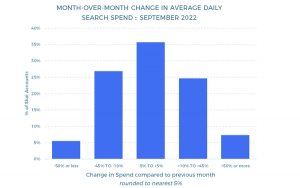I’m a workaholic. Guilty as charged. I enjoy working. But I gotta be honest, this whole shift to working from home has me working more than ever. By Friday, I’m beyond burnt out. The 5-day workweek has started to feel a little antiquated and tiresome. It wasn’t built for a hyper-connected workplace. If we’ve drastically changed the nature of our work, shouldn’t we also rethink our workweek? It’s time for a change.
The grind is on
We’re never going back to normal. Working from home has unlocked far too much productivity. That doesn’t mean we’re not going back to the office. It just means video calls and virtual connections are far superior to spending good portions of our day in traffic or travel. But it also means we’re grinding a lot more. A larger percentage of our day is dedicated to outputs, with earlier starts and later ends, fewer casual conversations, and less socialization. Oh, we’re getting a lot done alright. But those 40 hours are a pure grind. What was done in 5 days is now done in 4 and then we add more to the pile. And we can’t get away from it. That home computer stares us in the face all day and night. We’re literally in work mode all the time.
It’s taking a toll
Our bodies and minds are starting to feel the effects. Mental health is on the decline. Physical health is at risk as well. Sitting at a desk all day is the worst. Our homes were never intended to be a place of work. And for those that thrive working from home, it’s usually a result of the privilege of having a large home with dedicated office space or not having children running around. For most of us, it’s not sustainable.
And then there are the extremes of being surrounded by family 24/7 or completely isolated from social interaction. Human beings need a balance. This is not good. We need a new approach
Three ways to replace the standard workweek
With that said, we need to rethink the workweek. Here’s what we’re thinking about for Stryve.
4-Day Workweek
Cut out the Friday. Give people 3 days to refresh. An intense 4 days followed by a disconnect for 3 sounds like a fair trade-off. In fact, it seems to improve productivity. At Microsoft Japan, a 4-day workweek resulted in a 40% increase in productivity. This seems like an option that serves multiple outcomes and it seems to be gaining steam in some countries.
6-Hour Workday
The best work comes when you are in a state of flow. Cal Newport, best-selling author of Deep Work: Rules for Focused Success in a Distracted World, says the three to four hours of continuous, undisturbed deep work each day is all it takes to see a transformational change in our productivity and our lives. If that’s the case, why are we working 8 hour days? 4 hours of deep work combined with 2 hours of administrative and meeting-based work should be enough. What are the other 2 hours for? We don’t need them. Time to trim the fat and get down to business.
On-Season / Off-Season
This one’s a bit challenging, but I’ve been toying with the concept of an on-season and off-season. Intense periods of work during peak times of the year, with seasonal downtimes. This is challenging, as our clients all have different schedules, but it would be great to have a period of intensity from September to May (with key breaks in between) with an offseason from June to August. The in-season would be a typical work week and the offseason would be a borderline shutdown. Think morning check-ins with a little work and afternoons off.
The time for change is now
We can wait for the world to go back to normal or we can adjust now. The old 9-5, 7 days a week, should never come back. It was based on an antiquated way of work. We need a new model that optimizes the happiness, health, and productivity of companies. And we need to do it now.
Business & Finance Articles on Business 2 Community
(12)






